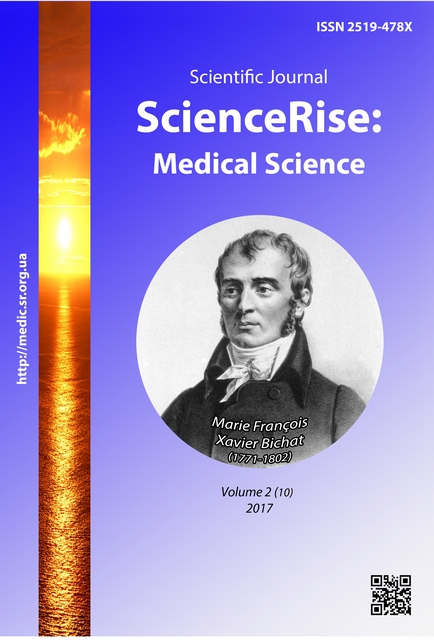The influence of competition on quality of hospital treatment from physician behavior perspective (theoretical model verification with case presentation from Vinnitsa, Ukraine)
DOI:
https://doi.org/10.15587/2519-4798.2017.94087Keywords:
quality of treatment, length of period between subsequent admissions, physician’s behavior, competitionAbstract
The aim of the study was to check theoretical proposition of elaborated by our research team theoretical model [1], i.e. physician’s emphasis to clinical hours instead of nonclinical within the relenting competition may interfere quality.
Methods. We collected the data by stratified panel design between departments of the city hospital No. 1, starting in 2008 with randomized inclusion. Thereafter, to sustain statistical significance we got on with total coverage up to January 31, 2012. Thus, we considered 2680 admission cases totally. Length of period between subsequent admissions (LBA) considered as the measure of treatment quality. We proceeded the data with competing risk modelling having in mind 2 types of subsequent admissions, that is the same cause of next admission and the different one.
Results. Lengthier hospital staying provided within the competition indeed safeguarded quality (increase in LBA) in case of the same cause admission, Z-test scored 1,957 with р=0,025. The effect was not significant for the next admissions due to different cause with Z scoring 0,128, р2=0,449. Still effect is positive (q=1,014). We think it’s important for validation of deduction, so far as better quality reduces patient’s frailty for both types of admissions.
Conclusion. We empirically checked the hypothesis stemming from theoretical model of physician’s behavior on part of possible impairment of quality under market monopoly. The theoretical model unveiled one of the key issue – physician’s emphasis toward clinical hours instead of nonclinical that necessarily interferes the quality. Empirical verification based on instances of patient overloads in the process of health reform in the city of Vinnitsa. Findings supported hypothesis, i.e. physician’s emphasis toward clinical hours instead of nonclinical within relenting competition indeed impinged on quality of treatment indicted by LBA shortening. We clarified the LBA increase with lengthier hospital staying envisaged under competition. Z-test scored 1,957 with р=0,025) in case of the same cause admission, and it was insignificant for next admissions due to different cause with the same direction of the effect.
References
- Ocheredko, O. M., Yaremena, I. V. (2014). Econometric model of physician behavior in hospitals with empirical verification under reform of medical care in Vinnitsa town. Actual problems of clinical and preventive medicine, 2 (1), 3–12.
- Echevin, D., Fortin, B. (2011). Physician Payment Mechanisms, Hospital Length of Stay and Risk of Readmission: A Natural Experiment. SSRN Electronic Journal, 11-12. doi: 10.2139/ssrn.1825207
- Fortin, B., Jacquemet, N., Shearer, B. (2008). Policy Analysis in the Health-Services Market: Accounting for Quality and Quantity. Annales d'Economie et de Statistiques, 91-92, 293–319.
- Yaremena, I. V. (2015). Study of influence of competition in duration hospitalization based field experiments. Experimental and clinical medicine, 2 (67), 155–161.
- Cutler, D. M. (1995). The Incidence of Adverse Medical Outcomes Under Prospective Payment. Econometrica, 63 (1), 29–50. doi: 10.2307/2951696
- Keiding, N., Andersen, P., Klein, J. (1997). The role of frailty models and accelerated failure time models in describing heterogeneity due to omitted covariates. Statistics in Medicine, 16 (2), 215–24. doi: 10.1002/(sici)1097-0258(19970130)16:2<215::aid-sim481>3.3.co;2-a
- Folland, S., Goodman, A. C., Stano, M. (2012). The economics of health and health care. London: Routledge, 624.
- Gaynor, M., Vogt, W. B. (2003). Competition among Hospitals. The RAND Journal of Economics, 34 (4), 764–785. doi: 10.2307/1593787
- Grytten, J., Sorensen, R. J. (2008). Patient choice and access to primary physician services in Norway. Health Economics, Policy and Law, 4 (01), 11–27. doi: 10.1017/s1744133108004623
- McGuire, T. G. (2000). Physician Agency. Chep. 9. Handbook of Health Economics. Amsterdam: Elsevier, 461–536. doi: 10.1016/s1574-0064(00)80168-7
- Gaynor, M., Gertler, P. (1995). Moral Hazard and Risk Spreading in Partnerships. The RAND Journal of Economics, 26 (4), 591–614. doi: 10.2307/2556008
- McGuire, T. G., Pauly, M. V. (1991). Physician response to fee changes with multiple payers. Journal of Health Economics, 10 (4), 385–410. doi: 10.1016/0167-6296(91)90022-f
- Echevin, D., Fortin, B. (2011). Physician Payment Mechanisms, Hospital Length of Stay and Risk of Readmission: A Natural Experiment. SSRN Electronic Journal, 44. doi: 10.2139/ssrn.1919071
- Yaremena, I. V., Ocheredko, O. M. (2015). Physician behavior in hospital in competitive environment. Biology and Medical Sciences. Vienna, 203–208.
Downloads
Published
How to Cite
Issue
Section
License
Copyright (c) 2017 Iryna Yaremyna, Oleksandr Ocheredko

This work is licensed under a Creative Commons Attribution 4.0 International License.
Our journal abides by the Creative Commons CC BY copyright rights and permissions for open access journals.
Authors, who are published in this journal, agree to the following conditions:
1. The authors reserve the right to authorship of the work and pass the first publication right of this work to the journal under the terms of a Creative Commons CC BY, which allows others to freely distribute the published research with the obligatory reference to the authors of the original work and the first publication of the work in this journal.
2. The authors have the right to conclude separate supplement agreements that relate to non-exclusive work distribution in the form in which it has been published by the journal (for example, to upload the work to the online storage of the journal or publish it as part of a monograph), provided that the reference to the first publication of the work in this journal is included.









